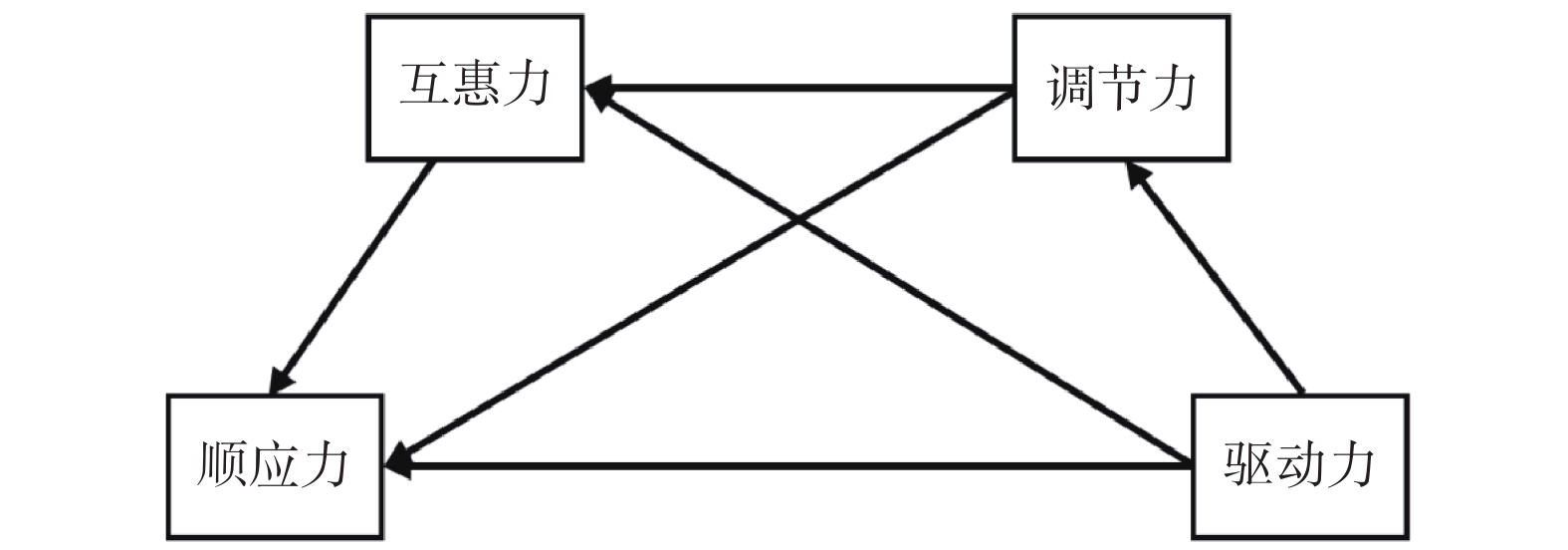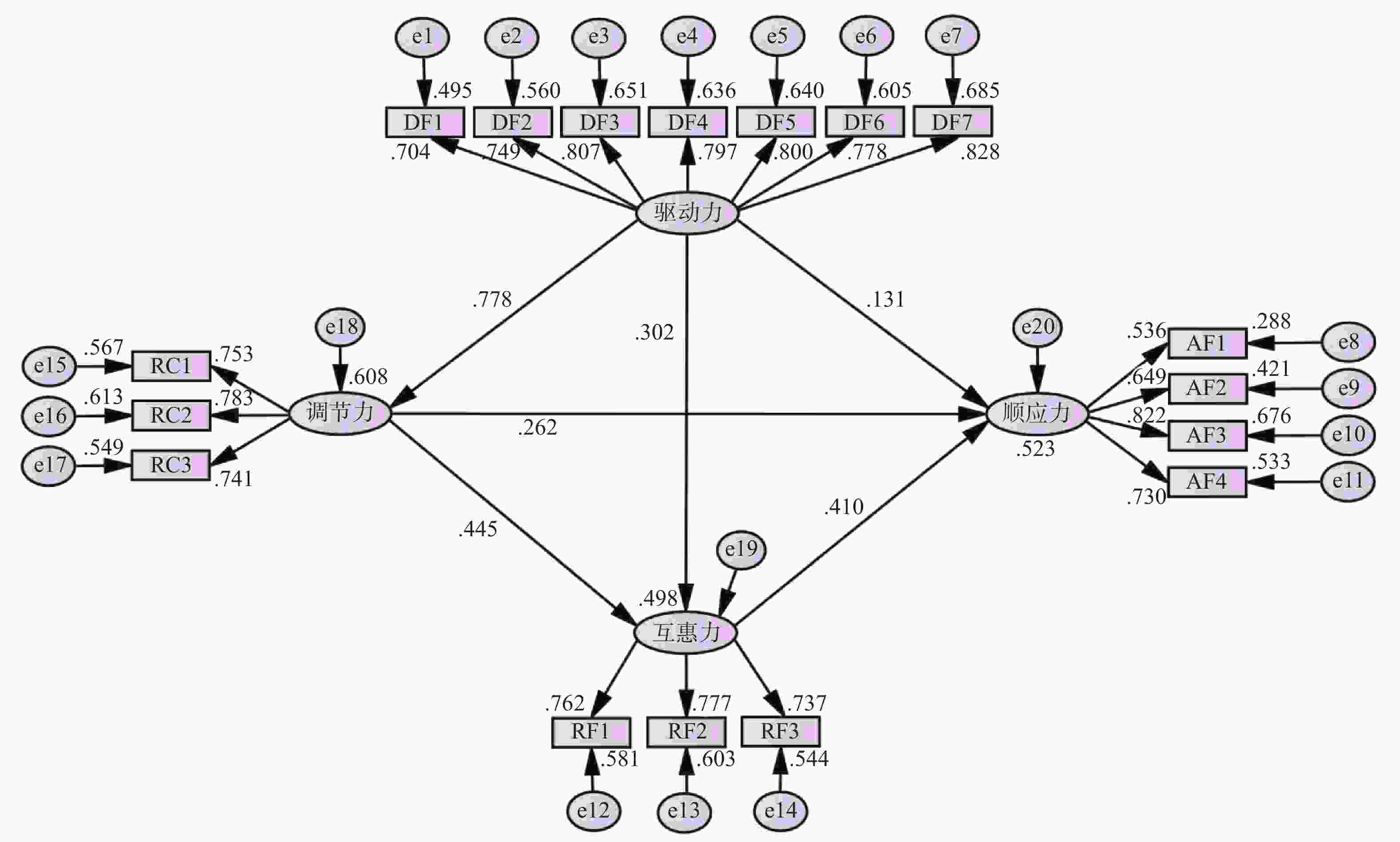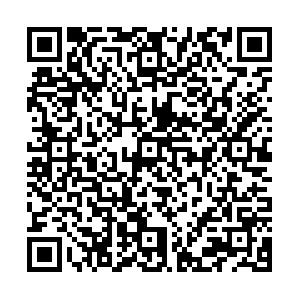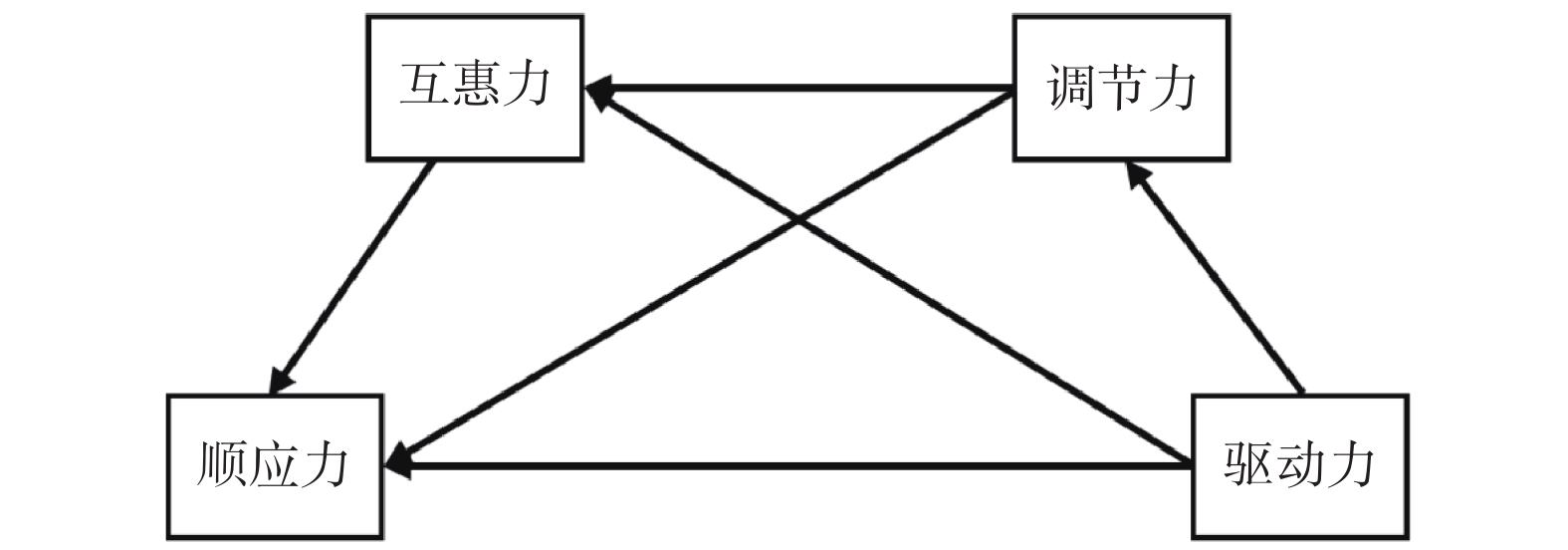Research on the Internal Relationships in Undergraduates' Online Learning Competence Based on Structural Equation Modeling
-
摘要:
目的 探讨本科生在线学习力内部各维度间相互作用机制,为优化相关软件设计及在线教育策略提供科学依据。 方法 采用横断面研究,于2024年10月通过自制量表对昆明医科大学347名本科生进行线上问卷调查。使用SPSS 26.0软件进行信度检验以评估问卷内部一致性,进行探索性因子分析以识别在线学习力的潜在因子结构,Amos 24.0软件构建结构方程模型以验证各维度间直接效应与中介路径。 结果 驱动力对调节力和互惠力均存在直接正向作用(β = 0.778,P < 0.001;β = 0.302,P = 0.003),但对顺应力的直接作用不显著(β = 0.131,P = 0.182)。调节力与互惠力对顺应力均有直接正向影响(β = 0.262,P = 0.022;β = 0.410,P < 0.001)。驱动力对顺应力的间接效应占总效应的78.1%(P = 0.007),其中调节力中介效应显著(β = 0.178,P = 0.023),互惠力中介效应不显著(β = 0.108,P = 0.060),二者可共同构成链式中介效应模型(驱动力→调节力→互惠力→顺应力)(β = 0.124,P = 0.004)。 结论 驱动力是在线学习力的核心,须通过调节力及互惠力促进顺应力提升。在线学习软件需通过优化反馈机制,深化互动设计,以促进知识内化与适应性提升。 Abstract: Objective To explore the interaction mechanisms among different dimensions of online learning competence in undergraduates, providing scientific evidence for optimizing software design and online education strategies. Methods A cross-sectional study was conducted with 347 undergraduates from Kunming Medical University via an online questionnaire in October 2024. Reliability testing and exploratory factor analysis were performed using SPSS 26.0, while structural equation modeling was constructed with Amos 24.0. Results Driving force directly and positively influenced regulatory force (β = 0.778, P < 0.001) and reciprocal force (β = 0.302, P = 0.003), but had no significant direct effect on adaptive force (β = 0.131, P = 0.182). Regulatory force and reciprocal force both exerted direct positive effects on adaptive force (β = 0.262, P = 0.022; β = 0.410, P < 0.001). The indirect effect of driving force on adaptive force accounted for 78.1% of the total effect (P = 0.007), with regulatory force showing a significant mediating role (β = 0.178, P = 0.023), while reciprocal force alone did not (β = 0.108, P = 0.060). A chain mediating effect (driving force→regulatory force→reciprocal force→adaptive force) was confirmed (β = 0.124, P = 0.004). Conclusion Driving force serves as the core of online learning competence, and adaptive capacity is enhanced through regulatory and reciprocal forces. To promote knowledge internalization and adaptability, it is required to optimize feedback mechanisms and deepen interactive designs in online learning platforms. -
表 1 研究假设
Table 1. Research hypotheses
假设 内容 H1 驱动力与调节力之间存在正向关系 H2 驱动力与互惠力之间存在正向关系 H3 驱动力与顺应力之间存在正向关系 H3a 调节力在驱动力与顺应力之间存在中介作用 H3b 互惠力在驱动力与顺应力之间存在中介作用 H3c 调节力与互惠力在驱动力与顺应力之间存在
链式中介作用H4 互惠力与顺应力之间存在正向关系 H5 调节力与互惠力之间存在正向关系 H6 调节力与顺应力之间存在正向关系 表 2 调查问卷条目及因子载荷
Table 2. Survey questionnaire items
维度 条目 基本人口学特征 您的性别是 您的年龄是 您的年级是 您的专业是 驱动力(DF) DF1通过该平台的使用我能够充实自己,从而获得满足感 DF2我认为使用该平台是一种很好的学习方式,能帮助我更加有效地进行自主学习 DF3我能认识到该平台对专业学习和自我成长的意义与价值,并认真完成每一项学习任务 DF4在使用该平台后,我能掌握课程的内容要点,并将其与已有知识经验或专业实践进行有机联系 DF5我通过使用该平台掌握了新知识,从而产生思想、观念上的变化 DF6通过学习新知识,我对旧知识、旧经验会有新的理解、体会或感悟 DF7通过使用该平台,我会主动思考在线学习内容与专业实践之间的关系 顺应力(AF) AF1在学习过程中,我通常不会被手机信息,弹框广告,娱乐视频或电子游戏所吸引 AF2在线学习中,我能够排除周边物理学习环境的干扰(如朋友邀请),集中注意力 AF3当学习受阻或中断后,我可以很快重新投入到学习中去 AF4我会有意识地克服在线学习中的惰性和不良习惯 互惠力(RF) RF1在学习过程中遇到困难时,我会借鉴他人经验(或向他人求助),努力找出问题的解决方法 RF2我能基于不同的在线学习目的,用恰当方式表达个人的想法和观点 RF3在线学习过程中,我愿意积极与老师和其他同伴讨论、交流,并觉得受益匪浅 调节力(RC) RC1我会对在线学习结果和预期目标进行比对,形成清晰判断 RC2我会根据在线学习的实际情况,灵活调整学习计划与策略 RC3我会对在线学习过程中的负面情绪进行及时控制、调整,使自己保持冷静 表 3 信度及效度检验指标
Table 3. Indicators for reliability and validity assessment
提取因子 Cronbach’s α CR 方差贡献率(%) 因子载荷量 DF 0.915 0.916 46.459 0.728 0.732 0.741 0.742 0.708 0.762 AF 0.772 0.782 9.276 0.638 0.790 0.753 0.629 RF 0.798 0.803 6.400 0.781 0.776 0.728 RC 0.801 0.803 5.537 0.697 0.732 0.681 总量表 0.923 67.672 表 4 模型拟合指标
Table 4. Model fit indices
拟合指标 χ2/DF RMSEA GFI AGFI NFI IFI CFI TLI 参考值 <3 <0.08 >0.9 >0.9 >0.9 >0.9 >0.9 >0.9 实测值 1.902 0.051 0.935 0.913 0.933 0.967 0.967 0.960 表 5 聚合效度和区别效度检验
Table 5. Convergent validity and discriminant validity test
维度 AVE DF RC RF AF DF 0.611 0.782 RC 0.479 0.778* 0.759 RF 0.576 0.648* 0.680* 0.759 AF 0.576 0.601* 0.643* 0.673* 0.692 对角线数值为AVE的平方根值,对角线下数值代表不同维度间相关系数;*P < 0.05。 表 6 结构方程模型估计值
Table 6. Structural equation model estimates
假设 路径说明 标准化回归系数 非标准化回归系数 S.E. C.R. P 结果 H1 驱动力→调节力 0.778 0.748 0.070 10.649 <0.001 支持 H2 驱动力→互惠力 0.302 0.250 0.084 2.997 0.003 支持 H3 驱动力→顺应力 0.131 0.115 0.086 1.335 0.182 不支持 H4 互惠力→顺应力 0.410 0.432 0.100 4.303 <0.001 支持 H5 调节力→互惠力 0.445 0.383 0.093 4.123 <0.001 支持 H6 调节力→顺应力 0.262 0.238 0.104 2.298 0.022 支持 表 7 Bootstrap中介效应检验结果
Table 7. Bootstrap mediation effect test results
效应 路径 效应值 相对中介效应(%) Bias-corrected 95%CI P Lower Upper 中介效应 驱动力→调节力→顺应力 0.178 33.9 0.018 0.530 0.023* 驱动力→互惠力→顺应力 0.108 20.6 −0.016 0.283 0.060 驱动力→调节力→互惠力→顺应力 0.124 23.6 0.045 0.310 0.004* 间接效应 驱动力→顺应力 0.410 78.1 0.251 0.759 0.007* 直接效应 驱动力→顺应力 0.115 21.9 −0.106 0.280 0.314 总效应 驱动力→顺应力 0.525 100.0 0.354 0.708 0.007* *P < 0.05。 -
[1] 梁潇. 在线教育在高等教育中的应用及挑战应对[J]. 现代职业教育,2024(21):141-144. doi: 10.3969/j.issn.2096-0603.xdzyjy202421036 [2] Aristeidou M,Cross S,Rossade,et al. Online exams in higher education: Exploring distance learning students' acceptance and satisfaction[J]. Journal of Computer Assisted Learning,2024,40(1):342-359. doi: 10.1111/jcal.12888 [3] George P. Richardson. What Jay didn't tell us: Hidden gems in the system dynamics practices of Jay W. Forrester[J]. System Dynamics Review,2022,38(4):398-418. doi: 10.1002/sdr.1721 [4] 李宝敏,宫玲玲,祝智庭. 在线学习力测评工具的开发与验证[J]. 开放教育研究,2018,24(3):77-84. [5] Kuo M, Tsai C, Wang J. Linking web-based learning self-efficacy and learning engagement in MOOCs: The role of online academic hardiness[J]. The Internet and Higher Education,2021,51:100819-100819. [6] 石雪,杨晓娟. 混合式学习中大学生在线学习力影响因素研究[J]. 现代教育技术,2020,30(4):95-100. doi: 10.3969/j.issn.1009-8097.2020.04.014 [7] 郑勤华,徐珺岩. 在线学习力: 结构特征及影响因素[J]. 开放教育研究,2020,26(4):77-85. [8] 惠良虹,王萧棋. 基于复杂动态系统视角的在线自我调节学习与外语学习投入关系研究[J]. 外语研究,2025,42(1):38-45. [9] Chen H,Lu T,Sui H,et al. The relationship between physical activity and school adjustment in high school students: The chain mediating role of psychological resilience and self-control[J]. BMC Psychology,2024,12(1):706. doi: 10.1186/s40359-024-02227-1 [10] Findyartini A,Greviana N,Hanum C,et al. “How is social media used for learning?”: Relationships between social media use by medical students with their self-regulated learning skills[J]. BMC Medical Education,2024,24(1):235. doi: 10.1186/s12909-024-05222-7 [11] Luo Y,Lin J,Yang Y. Students’ motivation and continued intention with online self-regulated learning: A self-determination theory perspective[J]. Zeitschrift für Erziehungswissenschaft,2021,24(6):1379-1399. [12] 刘蔚, 李育玲, 韩清华, 等. 基于社会学习理论实习护生同伴支持教育方案的构建[J]. 护理学报,2023,30(3):16-19. [13] 刘子榆,杨宇. 线上教学学生学习“在场感”的缺失与重获—基于班杜拉社会学习理论[J]. 湖北成人教育学院学报,2021,27(3):60-63. doi: 10.3969/j.issn.1673-3878.2021.03.014 [14] 张涛,代钦,李春兰. 数学教学视域下理解与应用皮亚杰建构主义理论[J]. 数学教育学报,2024,33(3):96-102. [15] 张山,吴瑛. 认知负荷理论在医学教育领域中的应用进展[J]. 中华护理教育,2023,20(2):240-244. doi: 10.3761/j.issn.1672-9234.2023.02.020 [16] Ma L,Jiao Y,Xiao L,et al. Patterns of motivational beliefs among high-,medium-,and low-achieving English learners in China[J]. International Review of Applied Linguistics in Language Teaching,2024,62(2):747-773. doi: 10.1515/iral-2022-0108 [17] 缪秋菊,陈媛玲,罗娜,等. 基于SEM模型的慢性胃炎患者报告结局量表测评[J]. 昆明医科大学学报,2024,45(4):41-48. doi: 10.12259/j.issn.2095-610X.S20240406 [18] 刘晋红. 成就动机中期望价值模型的研究进展[J]. 内蒙古师范大学学报(教育科学版),2013,26(6):71-73. doi: 10.3969/j.issn.1671-0916.2013.06.024 [19] Billore S,Anisimova T,Vrontis D. Self-regulation and goal-directed behavior: A systematic literature review,public policy recommendations,and research agenda[J]. Journal of Business Research,2023,156:113435. [20] 朱俊华,许璐瑶,马近远. 生成式人工智能如何赋能学生学习—基于大学生自我调节学习行为的实证研究[J]. 高等工程教育研究,2025(2):66-72. [21] Gonzalez C S,Guerra D,Sanabria H,et al. Automatic system for the detection and analysis of errors to support the personalized feedback[J]. Expert Systems with Applications,2010,37(1):140-148. doi: 10.1016/j.eswa.2009.05.027 [22] 郭巧能,朱西周,杨光,等. 基于建构主义理论的化学拔尖创新人才班基础课程教学定量评价体系研究[J]. 化学教育(中英文),2025,46(2):25-32. [23] 韩中美,田甜,何涛,等. 在线环境中自我调节学习和同伴互动水平的关系研究[J]. 中国电化教育,2022,43(5):99-106. doi: 10.3969/j.issn.1006-9860.2022.05.014 [24] 刘革平,王星. 虚拟现实重塑在线教育: 学习资源、教学组织与系统平台[J]. 中国电化教育,2020,41(11):87-96. doi: 10.3969/j.issn.1006-9860.2020.11.012 [25] 刘革平,王星,高楠,等. 从虚拟现实到元宇宙: 在线教育的新方向[J]. 现代远程教育研究,2021,33(6):12-22. doi: 10.3969/j.issn.1009-5195.2021.06.002 -






 下载:
下载:



